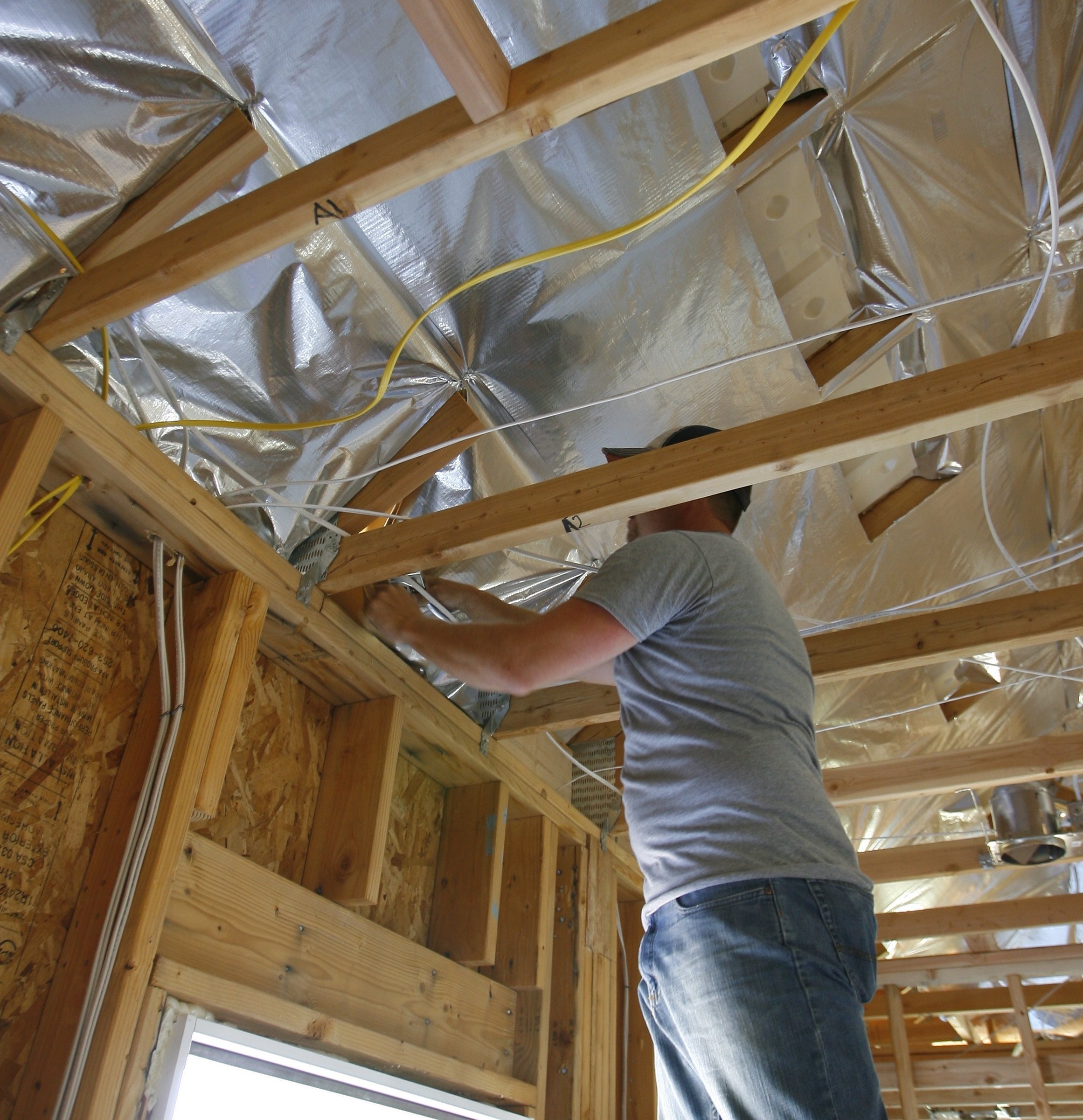Get Tech Tips
Subscribe to free tech tips.
Lifting Techniques Part 2 – Pulleys
This is Part 2 series by Senior Refrigeration Tech (and prolific writer) Jeremy Smith. Pay attention to this one, folks. I know rigging and safe lifting practices may be boring to some of you, but it could very well save your back or your life.
Disclaimer
This article is written by a technician representing his real-world experiences and his advice for best practices. You MUST understand the particular application, the weight of materials, and the load strength of every item you use—from struts to pulleys to anchors, ladders, ropes, etc. HVAC School is NOT giving OSHA-approved safety advice. Refer to your managers, safety professionals, and OSHA guidelines first and foremost. Apply any and all of these practices at your own risk with the knowledge that we are trying to help keep you from hurting (or killing) yourself.
Simple pulley systems
Let's get into the meat of lifting and moving heavier loads.
One thing that I use a LOT is a basic pulley. Simply put, when using a pulley or a system of pulleys called a block and tackle, the amount of force required to lift a load is the total weight divided by the number of lines supporting the load. An overhead pulley system doesn't reduce lifting force at all. It does nothing more than redirect the force applied. Since there is only one line supporting the load, there is no reduction in force required to lift the load.

A pulley connected to the load with one line tied off and pulling force exerted on the other end of the rope will cut the force required in half for lifting a load. Here, with two lines supporting the load, the force or effort required to lift the load is cut in half.

In practice, I limit this to loads of 50-100 pounds or so because, at the end of the lift, you will be lifting 100% of the weight. For your first couple lifts, try to stay on the lower end of these weights until you build confidence in your techniques. We'll get into more complicated systems with more pulleys and lines in a later section.
Start by tying off one end of the rope to something secure. This is your anchor point. In a best-case scenario, there is something they're purpose-built to anchor to. Worst case scenario, I've actually tied a loop around the entire curb assembly of a rooftop unit.
Remember, use good knots. The ONLY knot that I trust in this situation is a bowline. (The previous entry in this series talks more about knots and includes a video that shows you how to tie a bowline knot; you can check that out HERE.) Now that we've got our rope anchored, you can slide the pulley onto the rope and lower that pulley to your load. Tie the other end, the lifting end, of the rope off to something, anything really. A clove hitch is quick and easy here. All we’re doing is keeping the rope in place, so it doesn’t fall. To connect the pulley to the load, I like to use a climbing carabiner with a screw lock. Cheap carabiners that you can get at most home improvement warehouse stores are NOT suitable here. If all they do is bend under the load, count yourself lucky.
If there is a lifting eye or provision to install one on the load, use it and be sure to lock the eye bolt in place with the included nut. Otherwise, the load can unscrew itself from the bolt and fall. That is going to be the best and safest place to connect your pulley to the load. Now, back up to the roof and take a couple of seconds to straighten out the ropes. Get any twists out of the system and lift the load a short distance off the ground. Check everything. Is your anchor solid? Are you comfortable with the load? If everything is good and you're comfortable with the lift, then continue pulling the load up to the roof edge.
Remember when I said to limit the weight? Now you’ll see why. You've got the load almost there. You're going to have to squat to the load, grab it, and haul it over the roof edge. Yeah, it sucks, but it's not as bad as hauling the whole load all the way up the side of the building. This part is where a carabiner is nice because that big metal loop gives you a solid handle to grab and hang on to.
—Jeremy
P.S. – Today's Shopping list
Stanley National Hardware 3213BC 1-1/2″ Zinc Plated Fixed Single Pulley
Mad Rock Ultra Tech Screw Carabiner










Comments
To leave a comment, you need to log in.
Log In